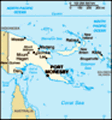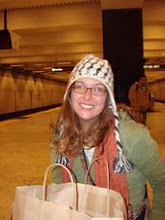The
flying foxes that fill Madang’s trees and skies have
vanished. The disappearance of these enormous fruit bats has caused a stir of rumors across all of the country. Over a week ago, I noticed a large number of flying foxes flying from the trees at an unusual time of the day. I didn’t think too much of it as I haven’t been here long enough to truly understand their patterns. Typically they sleep high in the trees of Madang throughout the day and leave for the
village settlements at dusk and return before dawn. During the Madang festival the drumming of the sing sings and the large crowds of people disrupted their pattern and they filled the sky during the daylight hours. It’s been over a week since the flying foxes have left Madang. Their absence is clearly noted.
The most troubling of all the
rumors was that their disappearance was a warning of a natural disaster approaching Madang. The streets were filled with rumors of a
tsunami. There have been many documented cases were animals and insects have acted “strangely” or “disappeared” shortly before an earthquake or tsunami, so the assumption is not entirely unfounded. There has been recent
earthquake activity and extremely rough seas. Several mornings I have been woken by small tremors shaking my bed. Rumors being what they are, grew and grew and created something of a “panic” in Madang. Apparently, the people of Madang were filled with fear and began packing their homes and heading out of the coastal area. The police drove through the streets shooting their guns in the air
warning people of the tsunami. Not long after, they returned shouting through megaphones for everyone to return to their homes. VSO was monitoring both the earthquake and tsunami alert websites and there was no tsunami warning issued of any kind. Therefore, the VSO office took no action. What a disaster! What will happen if there is a valid threat of a natural disaster?
After the seas calmed and the threat of a tsunami passed the flying foxes did not return. However, the coastline was covered with driftwood and the streets were filled with people carrying wood to their homes. The days grew hotter and hotter as the rumors grew faster and faster. The radio announced the arrival of the Madang flying foxes in
Maprik of the East Sepik Province. Some suggested they left Madang due to the heat. Others said they went for “a meeting” with other flying foxes. A teacher told me that the flying foxes left Madang in 1973 and returned in massive numbers. He believes the flying foxes have left again for their
mating season and will return in even greater numbers. I thought to myself….oh, flying foxes only mate every 35 years! I think that’s highly unlikely.
The mysterious disappearance of the flying foxes continues to hold a heightened buzz around Madang town. The latest buzz and most humorous apart from being at a meeting, is that they have been infected by the
avion flu. Although their whereabouts is known, questions remain. Why have these creatures that are the symbol of Madang left? Will they ever return to reclaim their place high in the trees over Madang?

Sunset from my veranda...why would they leave this place?

















